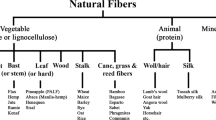Thermoplastic starch-based composites generate worldwide interest as they are based on green raw materials and undergo complete degradation. The composites were first fabricated from starch and sisal fibers as the major materials via the forming process. The effect of starches with different contents of single- and multicomponent plasticizers on the cushioning properties of the composites was studied. An increase in plasticizer contents within a certain range is shown to enhance materials resistance to pressure and its cushioning performance. With the multicomponent plasticizer content of 15%, the resistance to pressure for four types of composites prepared at different weight ratios of formamide and urea were of the order of 2:1 > 1:1 > 1:2, and that of the four types of composites fabricated at different weight ratios of glycerol and ethylene glycol were of the order of 1:2 > 2:1 > 1:1. Multicomponent plasticizer-containing starch-based composites are shown to be irregular elastomers and the stress-strain relation to be first defined by a hyperbolic tangent curve function and then by the tangent one.






Similar content being viewed by others

References
W. W. Hu, X. H. Yu, Q. Hu, et al., “Methyl orange removal by a novel PEI-AuNPs-hemin nanocomposite,” J. Environ. Sci., 53, 278–283 (2017).
C. Y. Sun, Q. H. Xu, Y. Xie, et al., “High-efficient one-pot synthesis of carbon quantum dots decorating Bi2MoO6 nanosheets heterostructure with enhanced visible-light photocatalytic properties,” J. Alloy. Compd., 723, 333–344 (2017).
Q. L. Yue, Y. N. Hou, S. Z. Yue, et al., “Construction of an off-on fluorescence system based on carbon dots for trace pyrophosphate sensing,” J. Fluoresc., 25, 585–594 (2015).
Q. L. Yue, T. F. Shen, L. Wang, et al., “A convenient sandwich assay of thrombin in biological media using nanoparticle-enhanced fluorescence polarization,” Biosens. Bioelectron., 56, 231–236 (2014).
Z. F. Jia, H. Q. Li, Y. Zhao, et al., “Preparation and electrical properties of sintered copper powder compacts modified by polydopamine-derived carbon nanofilms,” J. Mater. Sci., 53, No. 9, 6562–6573 (2018).
C. H. Song, M. X. Li, H. Qi, et al., “Impact of anti-acidification microbial consortium on carbohydrate metabolism of key microbes during food waste composting,” Bioresource Technol., 259, 1–9 (2018).
J. Gironès, E. F. X. Espinach, N. Pellicer, et al., “High-performance-tensile-strength alpha-grass reinforced starch-based fully biodegradable composites,” Bioresources, 8, No. 4, 6121–6135 (2013).
J. L. Guimarães, F. Wypych, C. K. Saul, et al., “Studies of the processing and characterization of corn starch and its composites with banana and sugarcane fibers from Brazil,” Carbohyd. Polym., 80, No. 1, 130–138 (2010).
H. P. S. Abdul Khalil, A. H. Bhat, and A. F. Ireana Yusra, “Green composites from sustainable cellulose nanofibrils: A review,” Carbohyd. Polym., 87, No. 2, 963–979 (2012).
S. Chen, Q. Ji, L. Q. Kong, et al., “The electrochromic properties of an alternative copolymer containing benzo[1,2-b:4,5-b’] dithiophene as the electron donor and benzoselenadiazole as the electron acceptor units,” Int. J. Electrochem. Sci., 12, No. 4, 3398–3416 (2017).
C. W. Zhang, F. Y. Li, J. F. Li, et al., “Research on rheological behavior of biobased composite slurry composed of sisal fiber and thermoplastic oxidized starch,” J. Biobased. Mater. Bio., 11, No. 2, 119–124 (2017).
X. Zhang, X. L. Wang, Q. L. Wang, et al., “Hydride ion (H–) transport behavior in barium hydride under high pressure,” Phys. Chem. Chem. Phys., 20, No. 13, 8917– 8923 (2018).
Y. Z. Wan, H. Luo, F. He, et al., “Mechanical, moisture absorption, and biodegradation behaviours of bacterial cellulose fibre-reinforced starch biocomposites,” Compos. Sci. Technol., 69, Nos. 7–8, 1212–1217 (2009).
P. Liu, F. Y. Li, J. F. Li, et al., “Thermoplastic starch matrix plasticized by single/compound plasticizer in starch-based composites,” Adv. Funct. Mater., 45, No. 14, 14140–14144 (2014).
X. F. Ma and J. G. Yu, “Thermoplastic starch plasticized by the mixture of urea and formamide,” Acta Polym. Sin., No. 4, 483–489 (2004).
X. F. Ma and J. G. Yu, “Hydrogen bond of thermoplastic starch and effects on its properties,” Acta Chim. Sinica, 62, No. 12, 1180–1184 (2004).
W. Aichholzer and H.-G. Fritz, “Rheological characterization of thermoplastic starch materials,” Starch-Starke, 50, No. 50, 77–83 (1998).
G. Della Valle, B. Vergnes, and D. Lourdin, “Viscous properties of thermoplastic starches from different botanical origin,” Int. Polym. Proc., 22, No. 5, 471–479 (2007).
A. F. Guo, J. F. Li, F. Y. Li, and B. K. Wei, “Study on the biodegradagility of plant fiber and starch dishware,” J. Funct. Mater., 40, No. 11, 1929–1932 (2009).
G. Canché-Escamilla, M. Canché-Canché, S. Duarte-Aranda, et al., “Mechanical properties and biodegradation of thermoplastic starches obtained from grafted starches with acrylics,” Carbohyd. Polym., 86, No. 4, 1501–1508 (2011).
T. Ma, Y. L. Wang, J. Wan, and L. W. Zhang, “Common cushion packing materials static compress property testing study,” Packaging Eng., 23, No. 2, 4–8 (2002).
B. L. Lu, “Research on static compression cushion curve of EPE polyethylene foaming material,” Packaging Eng., 28, No. 2, 42–44 (2007).
X. Ming, Y. Zhao, J. Lu, and Q. L. Peng, “Contrast and analysis of packaging material cushioning performance based on static compression testing,” Packaging Eng., 27, No. 2, 59–61 (2006).
A. Guo, J. Zhao, J. Li, and K. Guan, “Forming parameters optimisation of biomass cushion packaging material by orthogonal test,” Mater. Res. Innov., 19, S5-521–S5-525 (2015).
GB/T 8168-2008. Testing Method of Static Compression for Packaging Cushioning Materials.
Acknowledgments
The authors gratefully appreciate the financial support from the National Natural Science Foundation of China (Nos. 51775318, 51305239, and 51275278), and Natural Science Foundation of Shandong Provincial (Nos. ZR2013EEQ010 and 2014ZRB019XH). We also appreciate the assistance of our colleagues from Shandong University, China.
Author information
Authors and Affiliations
Corresponding author
Additional information
Translated from Problemy Prochnosti, No. 1, pp. 24 – 31, January – February, 2019.
Rights and permissions
About this article
Cite this article
Guo, A.F., Li, J.F., Li, F.Y. et al. Compression Behavior of Biodegradable Thermoplastic Plasticizer-Containing Composites. Strength Mater 51, 18–25 (2019). https://doi.org/10.1007/s11223-019-00045-0
Received:
Published:
Issue Date:
DOI: https://doi.org/10.1007/s11223-019-00045-0



